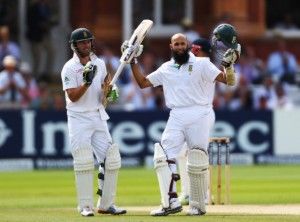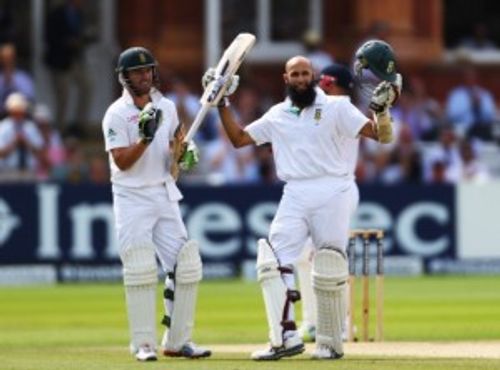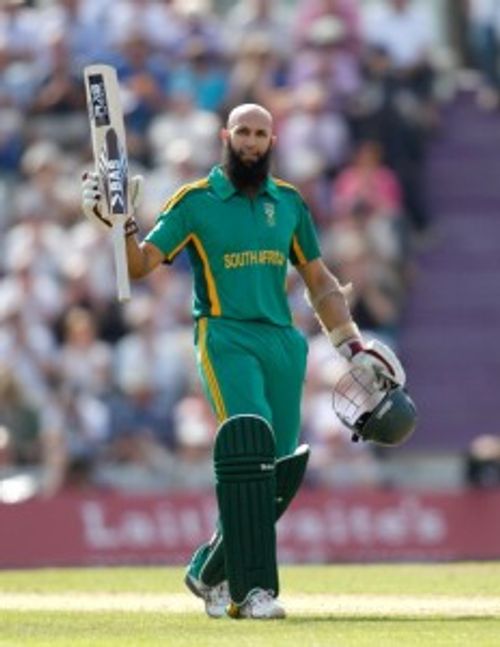
Hashim Amla: The man who can't be moved

Hashim Amla marched into the history books twice in the last month: one, after batting for 13 hours, gifting his captain an unforgettable 100th Test, and the other time when he beat Viv Richards’ record with gracious retribution. With a Test average of 50.26 and an ODI average of 56.49, Amla leads the way and plays a vital role in the South African batting line-up. He has been one cricketer who has batted his heart out every single time he took the field bearing the South African colours. He is amongst the finest of the top order batsmen for any team and is an irreplaceable asset given his recent exploits.
If you have been following South Africa’s tour of England this year, have you noticed a trend? Whenever Hashim Amla has been given a reprieve by the Englishmen, he has gone on to make the most of it by scoring a pile of runs, and by a pile I mean tons – quite literally. He is known to score a whole lot of runs anyway; but what makes it worse for the opposition is giving him a reprieve when they had the chance to avoid the carnage – just leaves a sour taste in the mouth. He did it throughout the Test series that included a record-triple hundred with contributions throughout and thus bagged the ‘Man of the Series’ award. His innings’ during the Test matches were an illustration of the sheer class he possesses and the genius at work who single-handedly obliterated the shine off the English pace-attack.
This time too, it was another record-breaking hundred that he scored at the Rose Bowl ODI in Southampton, after being let off by Kieswetter while on 42 and 92. Amla’s 150 yesterday facilitated him to take over Viv Richards’ record – he now is the fastest man in history to reach the milestone of 3000 ODI runs. Not just that, his knock also enabled South Africa to top the rankings in the ODIs as well.

Let’s rewind a bit and go back to 2004. A timid lad walked out on to the crease at Durban – his third Test innings – and was dismissed by Steve Harmison after scoring 1 run in 31 balls. Eight years later, the same diffident man was instrumental in taking his team to the top spot in the Test and ODI rankings, while taking on England. The only difference now was that he bore a fire – a fire to not just succeed, but to excel, a fire not just to contribute, but be the difference between a win and a loss for his team, and so he was.
His technique has been one of his chief strengths in getting to the current position of dominance that he is at, combined with mental toughness and quaint professionalism. His pernicious punches through the off-side, pugnacious back-foot drives, standing tall on his toes to slap the rising ball to the ropes by offering the full face of the blade, and the finesse with which he did all of that had cricket aficionados rapt with attention. The skill he displays in the form of the supremacy of bat over ball is analogous to what German Engineering is to immaculate. Incisively and meticulously he dispenses his innings – defends with impeccable solidity and slays the loose deliveries with ease at will. He is the live example of a complete batsman – one with an impregnable spirit.
Despite his phenomenal ODI and Test record, he has always been one of those undervalued cricketers. His continual brilliance has been regarded as spurts of brilliance; but the expanse of his record-triple century coupled with the record of being the fastest batsman to reach 3000 ODI runs is not a feat that can be achieved by your average Joe or by a squirt of luck – it has been achieved by rigorous toil and it had to pay off someday. If his abilities in his early days were doubted, his greatness beyond that stage should be evidence enough to reflect his greatness: in the last 45 Tests that he has played he has averaged 60.61, with 14 centuries and 18 fifties. We should have seen it coming.
The journey to the top has not been an easy one for Amla, but now, he has earned his plaudits and they are here to stay.